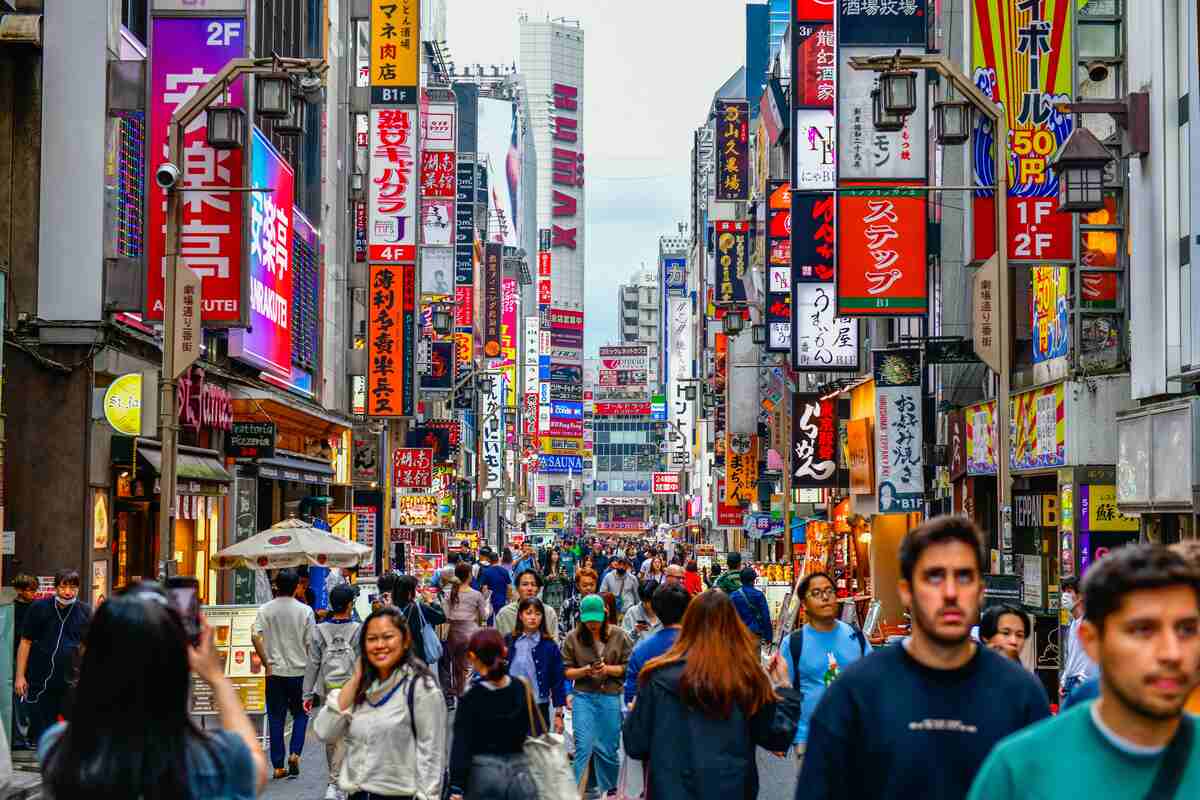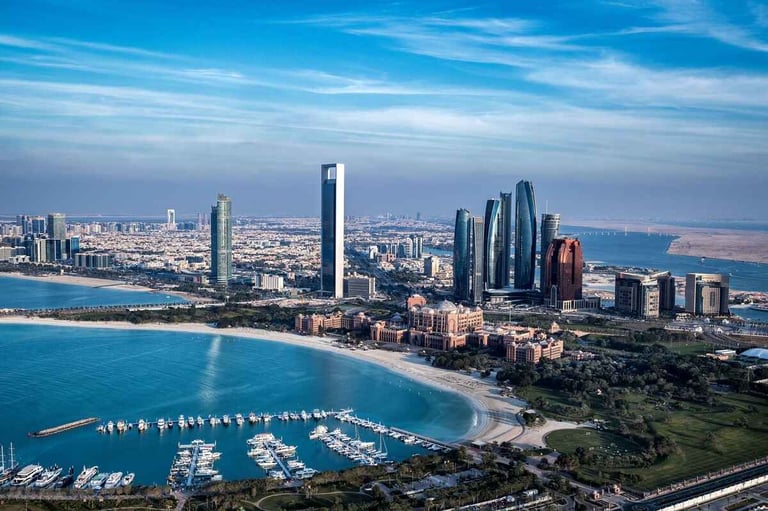As the world develops in an era of unprecedented urbanization, megacities—urban hubs with populations exceeding 10 million—are becoming major centers of global economic activity, innovation and social transformation.
According to United Nations projections, two out of every three people are likely to be living in cities or other urban centers by 2050. Owing to both demographic shifts and overall population growth, that means that around 2.5 billion people could be added to urban areas by the middle of the century. This rapid urban expansion is reshaping industries, influencing global commerce and redefining the way societies function.
From the bustling streets of Tokyo to the sprawling landscapes of Delhi, the world’s most populated cities are not just demographic giants but also economic powerhouses, driving regional and global markets. These urban centers generate a significant share of their nations’ GDP, attract international investment and serve as hubs for technology, finance and manufacturing. However, they also face immense challenges, including infrastructure strain, environmental concerns and widening socio-economic disparities.
In this article, we delve into the 10 most populated cities in the world, exploring their rankings, the trends fueling their growth and their impact on the global economy.
Top 10 most populated cities and their economic significance
The 10 most populated cities in the world include:
1. Tokyo, Japan
Population: 37,115,000
According to the World Population Review, Tokyo is the world’s most populated city. In 2021, Tokyo’s nominal GDP reached $1.118 trillion. Key sectors driving the city’s growth are the medical market, which is the second largest in the world, and the electronics and telecommunications equipment industry which is one of Japan’s leading industries. The wholesale and retail trade industry is also among the most significant contributors to the city’s economy, followed by real estate.
The key to constantly generating innovation, which brings vitality and growth to the economy, lies in SMEs, which account for 99 percent of the companies in Tokyo and possess high technological capabilities.

2. Delhi, India
Population: 33,807,400
Delhi emerged as the second most populated city in the world. Delhi is one of the fastest-growing states in the country. At current prices, the advanced estimates of the Gross State Domestic Product (GSDP) of Delhi stood at $130 billion in 2022-2023.
Delhi has an attractive real estate market and is a preferred tourist destination. Due to its location, connectivity and rich cultural history, Delhi has always been a prime tourist attraction of the country. Delhi has also become a start-up hub over the past few years with a total of 3,93,877 MSME registered, which includes 3,65,849 micro-enterprises, 25,091 small and 2,937 medium enterprises.

3. Shanghai, China
Population: 29,867,900
In third place came Shanghai. The GDP of Shanghai hit $660.45 billion in 2023, ranking first among all Chinese cities. The city is one of China’s gateways to the world and is an important center of trade and finance. It is also home to the busiest container port in the world. In 2023, the container throughput of Shanghai Port approached 49.16 million twenty-foot equivalent units (TEUs), ranking first in the world for the 14th consecutive year.
The largest single service sector is the financial industry, which accounted for 18.5 percent of GDP in 2021, according to the Shanghai Municipal Bureau of Statistics. The industrial and manufacturing sector, while smaller than the service sector, is still an important industry of the city.
Shanghai is also home to a thriving automobile manufacturing industry, with the city accounting for about 10 percent of the country’s entire automobile manufacturing output in 2021.

4. Dhaka, Bangladesh
Population: 23,935,700
Dhaka is the fourth most populated city in the world. The capital’s economy is the largest in Bangladesh, contributing $213.3 billion in nominal gross state product and $740 billion in purchasing power parity terms as of 2022. It contributes 40 percent of Bangladesh’s gross domestic product.

5. Sao Paulo, Brazil
Population: 22,806,700
In fifth place came Sao Paulo. The city’s diversified and complex economy is the largest supplier of consumer goods, capital goods, raw materials and services to other regions in Brazil and abroad. According to the Brazilian Institute of Geography and Statistics and the State Data Analysis System, the State of São Paulo accounts for 32.12 percent of Brazil’s GDP.
The state has a diversified economy which includes metal-working industries, textile, food, automobile, aviation, and financial and services sectors.

6. Cairo, Egypt
Population: 22,623,900
Cario is the sixth most populated city in the world. In 2021, Cairo contributed almost 45 percent of the total gross domestic product (GDP) of Egypt. Cairo is also the largest urban agglomeration in Africa. Cotton textiles, agricultural products, chemicals, plastics, automobiles and other goods are all produced within the city.

7. Mexico City, Mexico
Population: 22,505,300
In the seventh place came Mexico City with a population of 22,505,300. The Mexico City region accounts for nearly one-fourth of the gross domestic product of Mexico. The largest sector in Mexico City is trade and transportation, accounting for 32.06 percent of employees in the city.
Other main industries in the city include construction and the production of iron and steel, textiles and yarn, plastics, furniture and cement. The tourism industry also generates some employment opportunities.

8. Beijing, China
Population: 22,189,100
The eighth most populated city in the world is Beijing. The city is the capital of the People’s Republic of China, and the country’s political and cultural center. The city is largely a post-industrial economy and has the biggest tertiary industry as a proportion of GDP among all Chinese cities.
In 2021, Beijing’s tertiary industry, or service sector, accounted for over 80 percent of the city’s GDP, while the secondary industry, or manufacturing sector, accounted for most of the remaining 23 percent.

9. Mumbai, India
Population: 21,673,100
In ninth place came Mumbai. The city is the largest in Maharashtra and is the top financial and commercial hub of India, given its significant contribution to the nation’s economy.
Mumbai boasts a GDP of $140 billion. To put things into perspective, the state of Maharashtra’s GSDP was approximately $435 billion in 2022-2023, accounting for 12.92 percent of India’s GDP.
The economy of Mumbai relies heavily on the banking, insurance and financial services sector, consumer packaged goods, port-based trade, IT services, and the Bollywood film industry.

10. Osaka, Japan
Population: 18,967,500
Osaka emerged as the tenth-most populated city in the world. At $195 billion, Osaka’s GRP accounts for approximately 3.8 percent of Japan’s GDP. Osaka has long been a center of manufacturing, particularly in electronics, machinery and chemicals. The city is also home to some of Japan’s largest retail and commercial districts, such as Umeda and Namba. Major local industries also include biotechnology, pharmaceuticals, life science and new energy.

Impact of population growth on business and investment
As the global population continues to rise, businesses and investors are facing both opportunities and challenges. With the United Nations projecting the world’s population to exceed 9.8 billion by 2050, rapid urbanization and demographic shifts are reshaping industries, influencing consumer behavior and redefining investment strategies.
A larger population means greater demand for goods and services, creating several opportunities for businesses in retail, healthcare, real estate and consumer technology. Fast-growing economies, particularly in Asia and Africa, are attracting multinational corporations eager to tap into expanding middle-class markets.
Population growth fuels workforce expansion, providing businesses with a steady supply of labor. This is particularly beneficial for manufacturing, construction and technology industries. Countries with youthful populations, such as India and Nigeria, are becoming major hubs for outsourcing, software development and industrial production due to their abundant workforce and lower labor costs.
While population growth drives economic activity, it also poses challenges such as housing shortages, environmental degradation and income inequality.
Governments and private investors are pouring billions into real estate development, smart cities and infrastructure projects to accommodate urban expansion. For instance, China’s Belt and Road Initiative and large-scale investments in African megacities highlight how urbanization is shaping investment priorities.
Challenges and opportunities in urban expansion
As cities around the world continue to grow at an unprecedented rate, urban expansion presents both significant challenges and promising opportunities for governments, businesses and communities. With over 66 percent of the global population expected to live in cities by 2050, managing this rapid growth is critical to ensuring sustainable development and economic prosperity.
The rapid influx of people into urban areas puts immense pressure on transportation, housing, water and electricity systems. Many cities, especially in developing countries, struggle to keep up with the demand, leading to traffic congestion, inadequate public services and power shortages.
A growing urban population also increases the demand for housing, often resulting in rising property prices, rent inflation, and the expansion of informal living areas. Affordable housing remains a pressing issue in megacities like Mumbai, Lagos and São Paulo.
Despite the mounting pressures caused by growing urban centers, they fuel economic activity by attracting investments in technology, real estate, retail and financial services. Cities serve as hubs of innovation, creating millions of jobs and driving national GDP growth.
Advancements in AI, Internet of Things and green energy are helping cities become smarter and more efficient. Smart city projects in places like Singapore and Dubai leverage technology to improve traffic management, energy use and public services.
As urban populations grow, governments and private investors have greater incentives to fund education, healthcare and social services. Better urban policies and planning can also improve the quality of life and ensure inclusive development.
Read: The freest country in the world 2024
FAQs about the most populated cities in the world
What is the fastest-growing city in the world?
The fastest-growing city in the world, according to the UN, is Delhi. With a population of 33,807,400, Delhi emerged as the second most populated city in the world and one of the fastest-growing states in India.
How does urban population growth affect global trade?
Urban population growth fuels global trade by increasing demand for goods and services, particularly in sectors like consumer products, real estate and infrastructure. Expanding cities drive higher imports of raw materials, energy and food, while also boosting exports as urban hubs become centers for manufacturing and innovation.
Additionally, improved connectivity through ports, airports and logistics networks enhances international trade efficiency, allowing businesses to scale operations and access new markets.
What industries thrive in the most populated cities?
The most populated cities foster thriving industries such as real estate, retail, finance, manufacturing and technology, driven by high consumer demand and strong economic activity. Additionally, sectors like transportation, healthcare and entertainment flourish as urban populations require extensive infrastructure, medical services and cultural amenities.
How do governments manage infrastructure in megacities?
Governments manage infrastructure in megacities by investing in large-scale urban planning projects, including public transportation systems, road networks and smart city technologies to improve efficiency. They also tend to implement public-private partnerships (PPPs) to fund and develop critical infrastructure, such as energy grids, water supply and waste management.
Additionally, policies focused on sustainability, zoning regulations and digital transformation help mitigate congestion, pollution and resource strain in rapidly growing urban centers.








